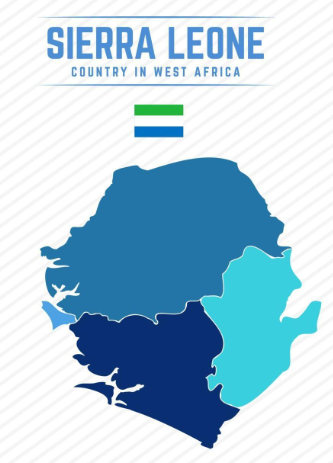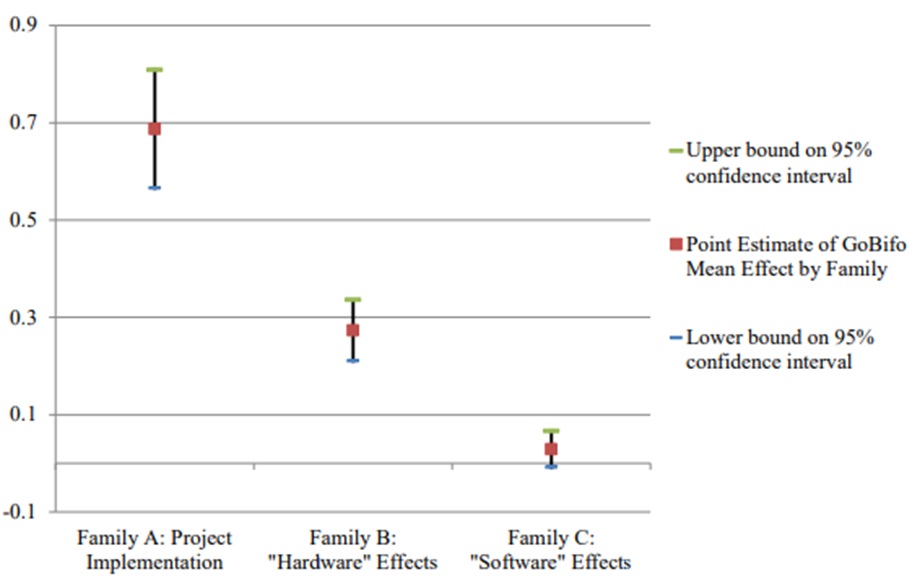Key insights
Community Driven Development (CDD) increases local participation in projects. By emphasizing local participation in and control over project implementation, CDD has come to be seen as an efficient and accountable mechanism to deliver local public goods. But CDD aims to do much more than this. Through intensive, long term facilitation, CDD aims to strengthen local institutions, make them more democratic and inclusive of marginalized groups, and enhance the capacity of communities to engage in collective action. GoBifo project specifically reflects the needs of the World Bank policy to increase local communities involvement. The effects of the program are demonstrated in the illustration further along. The project proved to be successful, it established village-level structures and tools to plan and manage development projects; provided communities with the financing and guidance to implement small-scale projects; and created links between these processes and local government institutions.

Policy background
The World Bank and other donors dedicate sizeable portions of their portfolios to community driven development (CDD) projects, yet until recently there has been little rigorous evidence regarding the efficacy of this approach. The key issue aimed to identify whether the introduced project would actually have positive results on the local communities. GoBifo project designers aimed to develop innovative solutions to challenges that two existing World Bank supported programs were encountering and provide a more localized complement to their ongoing operations. GoBifo project specifically reflects the needs of the World Bank policy to increase local communities involvement. GoBifo is proved to be a reasonable mechanism to deliver local public goods efficiently and at low cost.
As well as that, it has been highly successful in connecting citizens and community development projects with local leaders in the Ward Development Committees and chieftaincy system. These achievements align well with its placement under the Decentralization Secretariat and suggest that it could be an effective bottom-up approach to nurturing local government. CDD boosted public goods and economic welfare, yet did not enhance collective action, the voice of marginalized groups, nor participation in decision-making in Sierra Leone.
As it has been found by Casey, Glennerster & Miguel, GoBifo enabled collective action, which is significant and troubling for the long-term impacts of the project (31). Clearly, community members gained experience in working together to successfully implement local development projects and did engage in collective action as part of the GoBifo project. Yet their GoBifo-specific experiences did not lead them to take advantage of the new collective action opportunity presented by the building material voucher program. Thus, while GoBifo created the structures to manage local development and communities gained experience in implementation, the project left them no better able to take advantage of a simple real world subsidy program. It suggests that while GoBifo created immediate positive benefits for the community, it did not send the communities onto a stronger development trajectory that would continue to accrue benefits beyond the life of the project.
Recommendations
The GoBifo is a mechanism to deliver public goods efficiently within the project. However, there still is a question to whether the program would be as successful in relation to the project.

In order to identify validity of the project, the social study involving local communities has been carried out. The results demonstrated in the graph 1 above, GoBifo achieved its primary objective of creating the institutions, tools and linkages to facilitate local development. The program did what it said it would: it established village-level structures and tools to plan and manage development projects; provided communities with the financing and guidance to implement small scale projects; and created links between these processes and local government institutions (Casey, Glennerster & Miguel 46). Moreover, the contributions to and benefits from the sponsored projects were distributed broadly and equitably, and the leakage of project resources appears minimal. In Sierra Leone, the extreme poverty, recent recovery from civil war and endemic struggles against corruption make these achievements impressive. While local communities took positive benefits from the project, it did not send the communities onto a stronger development trajectory that would continue to accrue benefits beyond the life of the project.
GoBifo project aims to involve communities successfully on many different levels, and “beyond Sierra Leone, this evaluation speaks to the broader debate regarding the effectiveness of community driven development” (Casey, Glennerster & Miguel 48). It is found that CDD boosted public goods and economic welfare, yet did not enhance collective action, the voice of marginalized groups, nor participation in decision-making in Sierra Leone. The results from the study suggest that the comparative advantage of the World Bank and similar external donors may lie in implementing development hardware, not instigating social change, at least not as currently delivered through CDD. Changing social norms and community dynamics is important but arguably incredibly difficult. This evaluation of what has become one of the standard approaches for trying to influence social norms and community dynamics suggests that they are ineffective, however, such influence could be pursued through non-traditional methods. Such methods could involve taking a more in-depth approach to understand and adapt the project to local customs, thus local social norm will be taken into account.
Works Cited
Casey, Katherine, Glennerster, Rachel & Miguel, Edward. “The GoBifo Project Evaluation Report: Assessing the Impacts of Community Driven Development in Sierra Leone.”Innovations For Poverty Action, 2011.